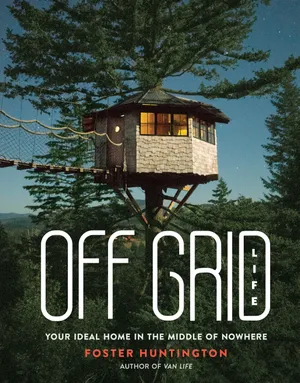With limited flights, shuttered resorts and canceled events, folks have taken travel into their own hands during the Covid-19 pandemic, often setting out to seek refuge in remote areas far away from the confines of locked-down cities. According to industry reports, July saw record-setting recreational vehicle sales, the strongest in four decades. Total shipments of RVs climbed 53.5 percent to 43,035 units with conventional travel trailers shooting up 76.4 percent. They also cite an RV sales spike of as much as 170 percent in the United States for May.
Personally, having driven across the country one too many times, I was not inclined to spend any more hours than necessary behind a steering wheel, but I was still seeking my own off-the-grid escape. I’d been hunting for raw land in a rugged Colorado mountain town for a while and when the right plot popped up with a tiny, rustic shack, I jumped on the purchase.
“Everything endearing about living in a city doesn’t really apply during a pandemic,” says Foster Huntington, photographer, former #vanlifer, treehouse-dweller and author of the new book Off Grid Life: Your Ideal Home in the Middle of Nowhere. “All the pluses of living in the country do still apply. Life is way less affected in a rural area.”
Off Grid Life: Your Ideal Home in the Middle of Nowhere
Bestselling Van Life author Foster Huntington shares his experiences—as well as others—living by his own rules in this aspirational book filled with awe-inspiring photographs of unique homes in unexpected places.
Huntington grew up reading books by Lloyd Kahn, founder of Shelter Publications, Inc. who has published over 12 books on off-grid living and inspired thousands to rethink how they approach and customize their homes. Foster’s first foray into this alternative living was a 1987 VW Vanagon Syncro, which he lived in for three years, followed by a series of whimsical treehouses connected by bridges that he built with a friend on a patch of Douglas firs in Oregon from 2014 to 2019. He now lives in a 1,000-square-foot barn nearby. His fascination with his own creative dwelling has led him on a path to explore others’ earthships, yurts, boats, shipping containers, tiny homes and cabins.
Most of my inspiration came from driving around rural towns nice and slow, observing the ways people choose to configure their homes when not bound by HOA guidelines, strict building codes and cookie cutter development plans. Old blog posts on random websites like wildsnow.com have troves of information on how to build various DIY structures and neat hacks for making good use of tiny spaces.
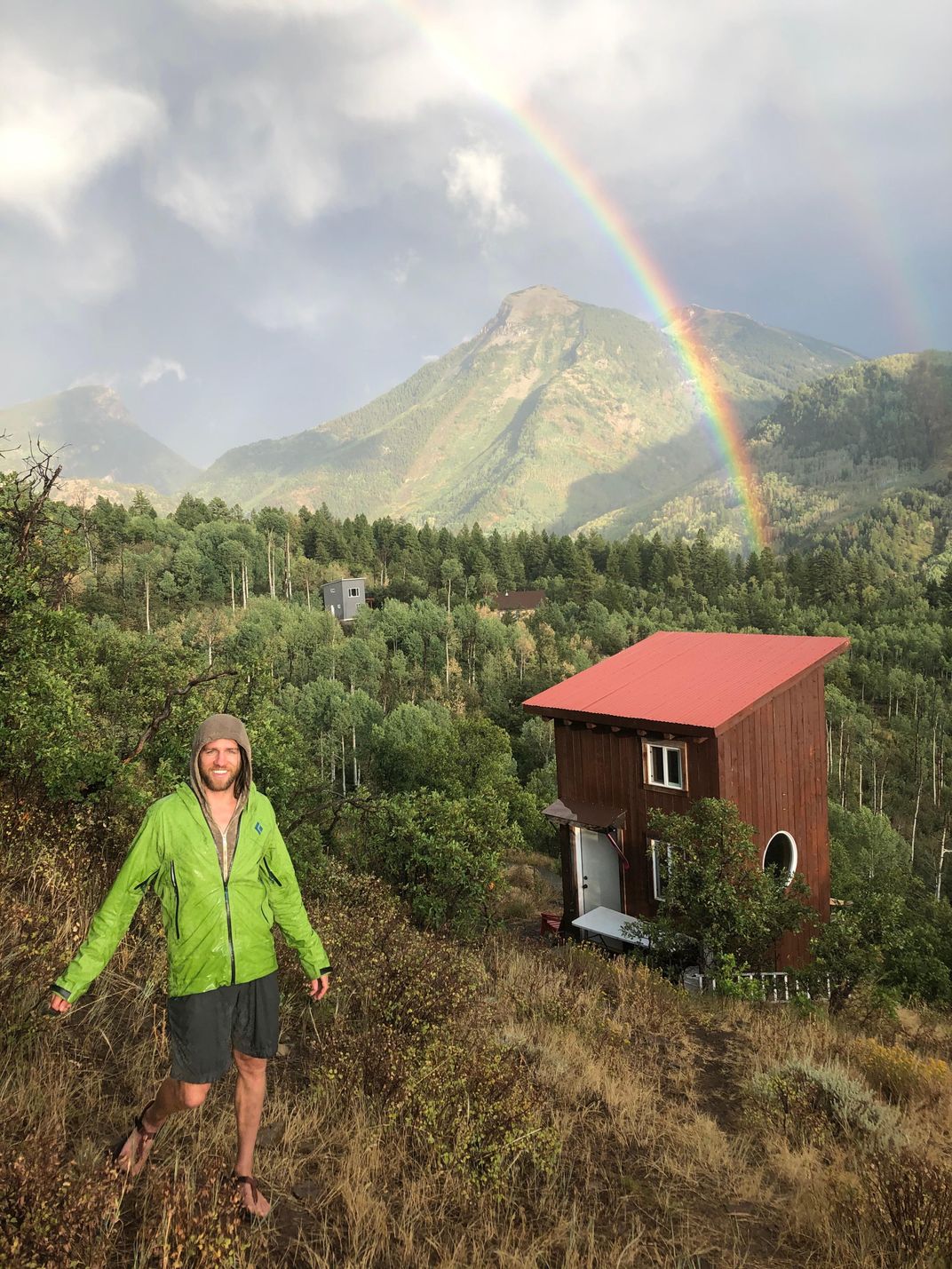
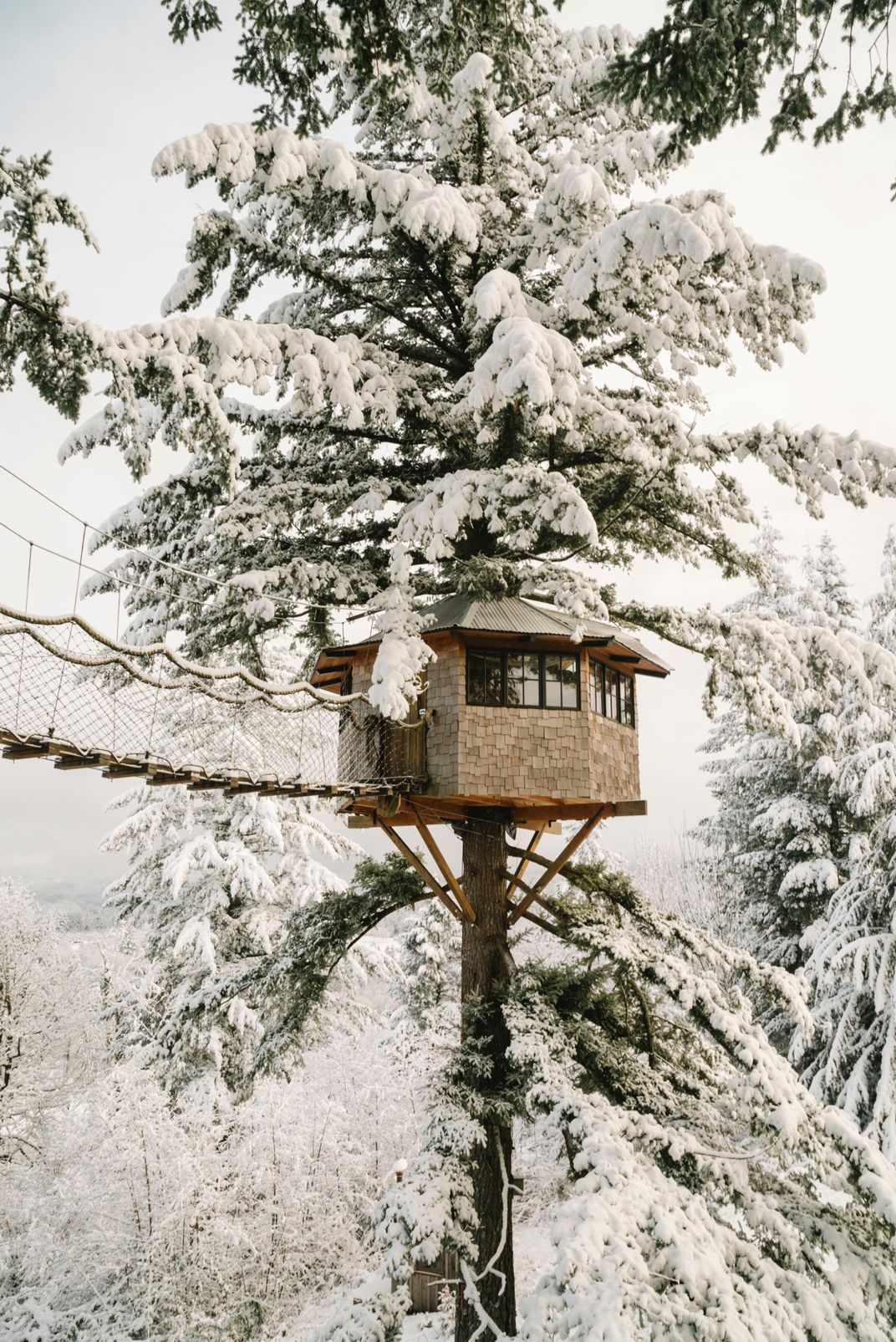
I do not have big plans to build a dream home figured out just yet. I’m content to use the shack as a warming hut for nearby backcountry skiing in the winter, as well as an isolated writing getaway. Even with a low financial overhead and small list of projects, I’ve still had to learn much on the fly about how to make this off-grid space work. How will I cook food, manage my own waste, stay warm, stay organized and charge my lights and laptop?
“Of all the ways we can take control of our lives, getting involved in our shelter is one of the easiest and most accessible,” Huntington writes.
Whether you’re buying an RV, a van, a remote cabin, or a ramshackle structure like mine, here are some things to consider when setting up your off-the-grid getaway.
Energy
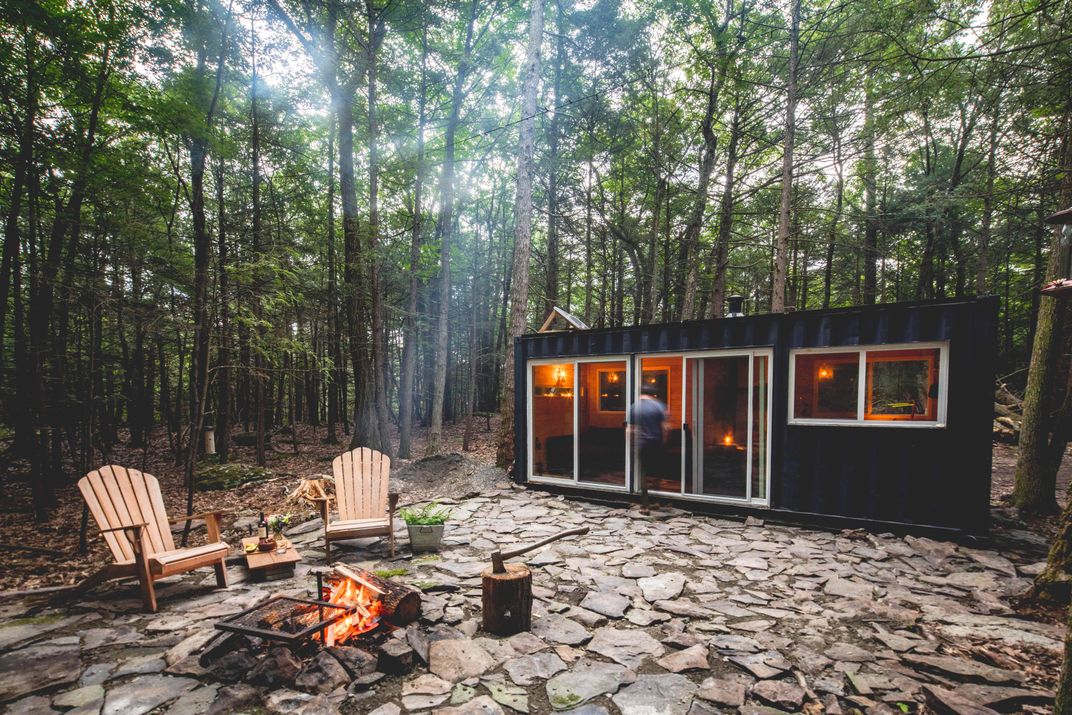
Like many off-grid amenities, energy options can be very area-specific. Have a place with a lot of sun? Solar options abound and are getting cheaper and more efficient. Out in the open with a bunch of exposure to wind? Wind turbines could make a great, low-impact source. Some places near water can also benefit from small hydropower setups. It’s all a consideration of the most efficient use of your space to meet your energy needs. My land sits on a south-facing slope that catches tons of sunlight throughout the day, so I’m trying out a Goal Zero Yeti 500x with Nomad 200 panels.
When possible, plan on heating your space and drying wet clothes with a wood-burning stove. Propane is more useful for cooking.
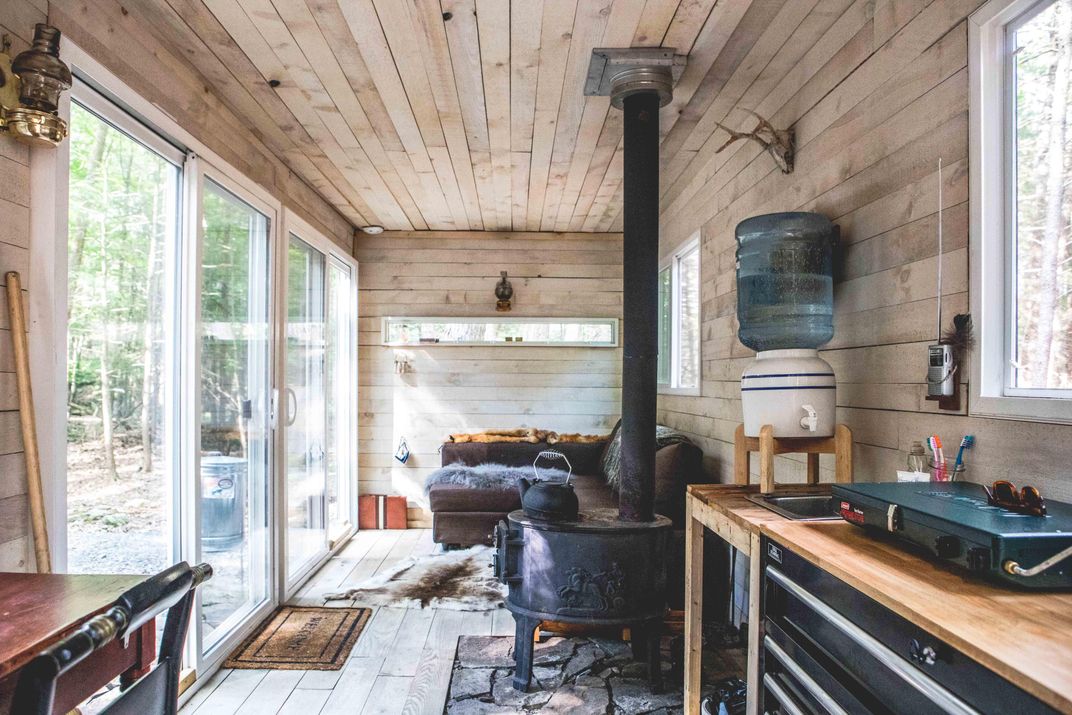
To power your devices, be they phones, laptops, LED lights or ultra-efficient refrigerators, figure out how much wattage you’ll use. “The nameplate on your device has the amperage and the voltage,” explains Kable Green, marketing and events manager of Salt Lake City-based Goal Zero, which has seen a 100 percent increase in power station sales during the pandemic and recent wildfire disasters, wiping out the inventory for their new Yeti 1500x and 3000x in two days. “Multiply the amperage and voltage together to get the wattage. So, 120 volts at 2 amps will pull a maximum of 240 watts—probably a little less when the device is up and running.”
If using solar power to keep your batteries charged, readjust the panel every hour or so to maintain direct exposure as the sun moves across the horizon. Extension cords lose efficiency with a longer distance for the power to travel, so don’t extend more than 15 feet. Modern lithium ion polymer batteries have advanced in their ability to hold a charge, but once the ambient temperature exceeds 70 degrees or drops below 40, they lose efficiency, so consider storing them in a dry cooler.
Water
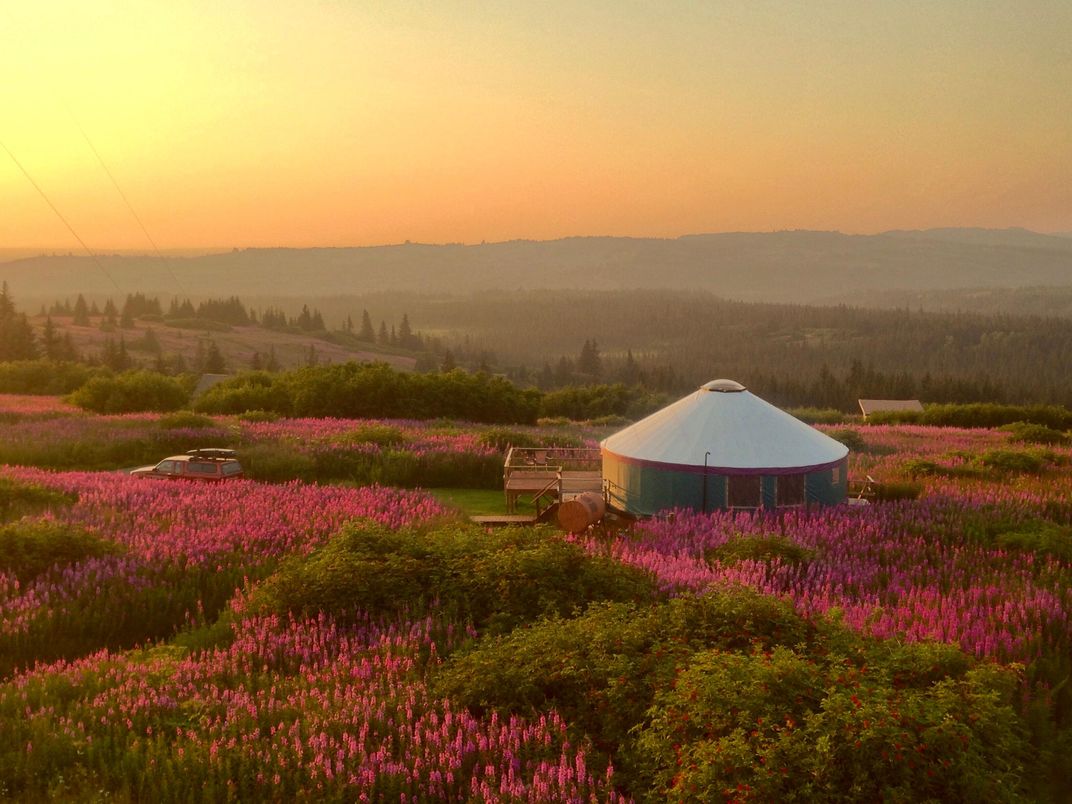
Water options are also very specific to your area and setup. Some places can have a well, but those cost around $10,000 to $15,000 to drill and power with a pump. MSR makes a reasonably priced 10 liter, high-volume gravity filter for large groups and basecamps, which can make any water source clean and drinkable.
RVs have large water tanks you can fill up that will last for weeks. If your place is more permanent and close to a road, buying a large cistern and having water delivered to it for cents on the gallon is usually the most cost-effective option. And seven-gallon jugs are easy to transport and generally hold enough water for drinking and cooking for a long weekend.
Rainwater catchment systems work great and can be a steady source for watering a garden, but be sure to look into the laws dictating water harvesting rights in your state.
If you tend to get dirty while recreating outside, having a hot shower makes a world of difference in your off-grid comfort level. Solar showers like the Nemo Helio LX heat up water in a black bag, propane-powered water heaters are more permanent installations, and highly efficient electric showers like the Geyser system run off a 12-volt power plug. All of these warm water options make doing dishes outside in the cold more pleasant as well.
Toilet
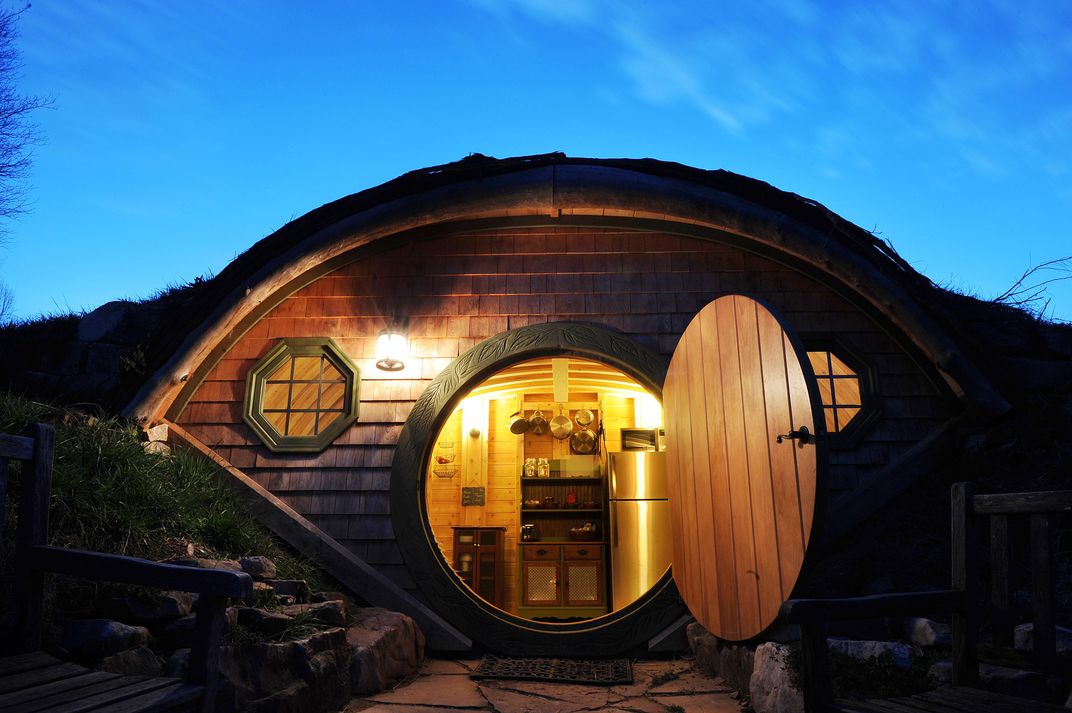
One of the first questions people ask about going off-the-grid is what the bathroom situation is.
“We live in a world where we’re so disconnected from our bathroom experience that we often don’t know how to handle it,” Huntington says. People often don’t know how a septic system works, what you can and can’t flush, and what the alternatives are.
“For someone building a small cabin, I would definitely invest in one of those small composting toilets. That way you really avoid the legality of an outhouse and don’t have to worry about contaminating groundwater,” he adds.
Compost toilets use no water and if maintained properly, have virtually no odor. They are small, self-contained, and turn solid waste into compost by creating an oxygen-rich environment where aerobic bacteria break down the waste pile. The end product is a high-quality soil amendment that can be used to grow a garden or trees—no infrastructure or plumbing required.
Communication
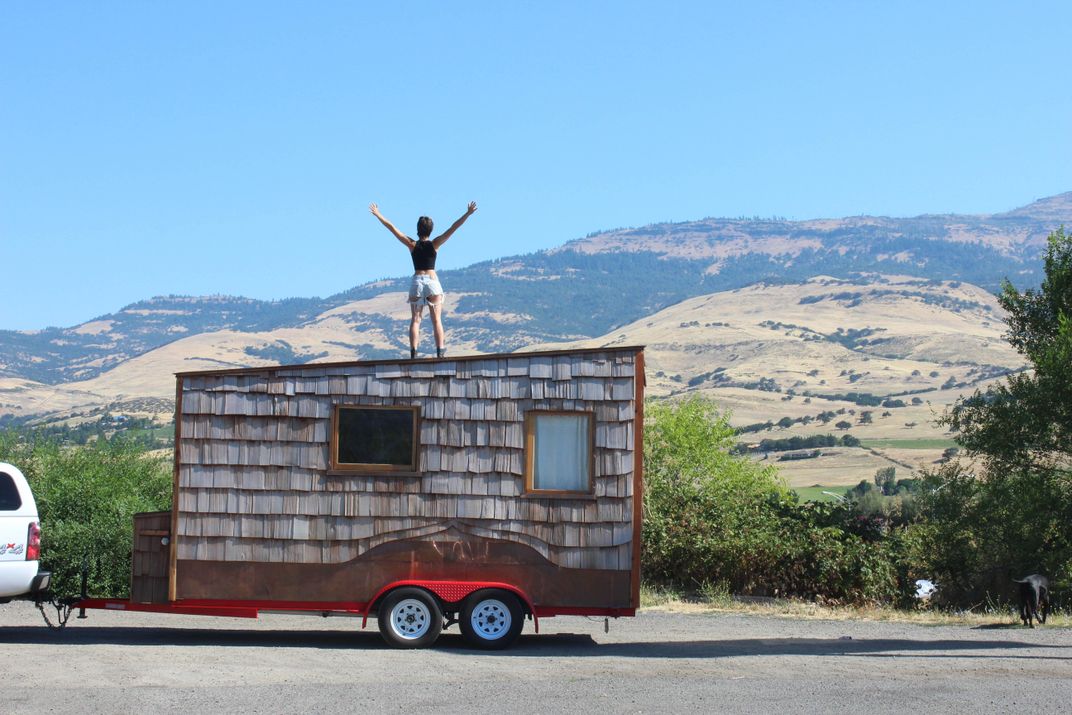
For some, going off-grid allows them to disconnect from the outside world. For others, staying connected is what allows them to get away in the first place.
GPS devices like Garmin’s InReach allow you to send messages to anyone’s phone, email or InReach via global satellite network as well as trigger an emergency SOS rescue call. For more regular communication, look into an unlimited data plan for tethering devices to your smartphone’s wireless hotspot, or invest in a separate mobile hotspot. Some van- and RV-dwellers splurge for a $500 signal booster to amplify one or two bars, or connect to a nearby wireless internet network, to run faster.
Regardless of your technical arrangement, you’re going to need to balance your relationship with connectivity while going off the grid. The internet is designed to make you spend as much time on it as possible but does not make you happier. Getting far out may have an automatic effect on this balance for you and to some extent, building or maintaining your own remote place may force you to be on your phone less.
“Nothing forces you to balance and prioritize your time better than getting a roof on your house before winter comes,” Huntington says.
Organization
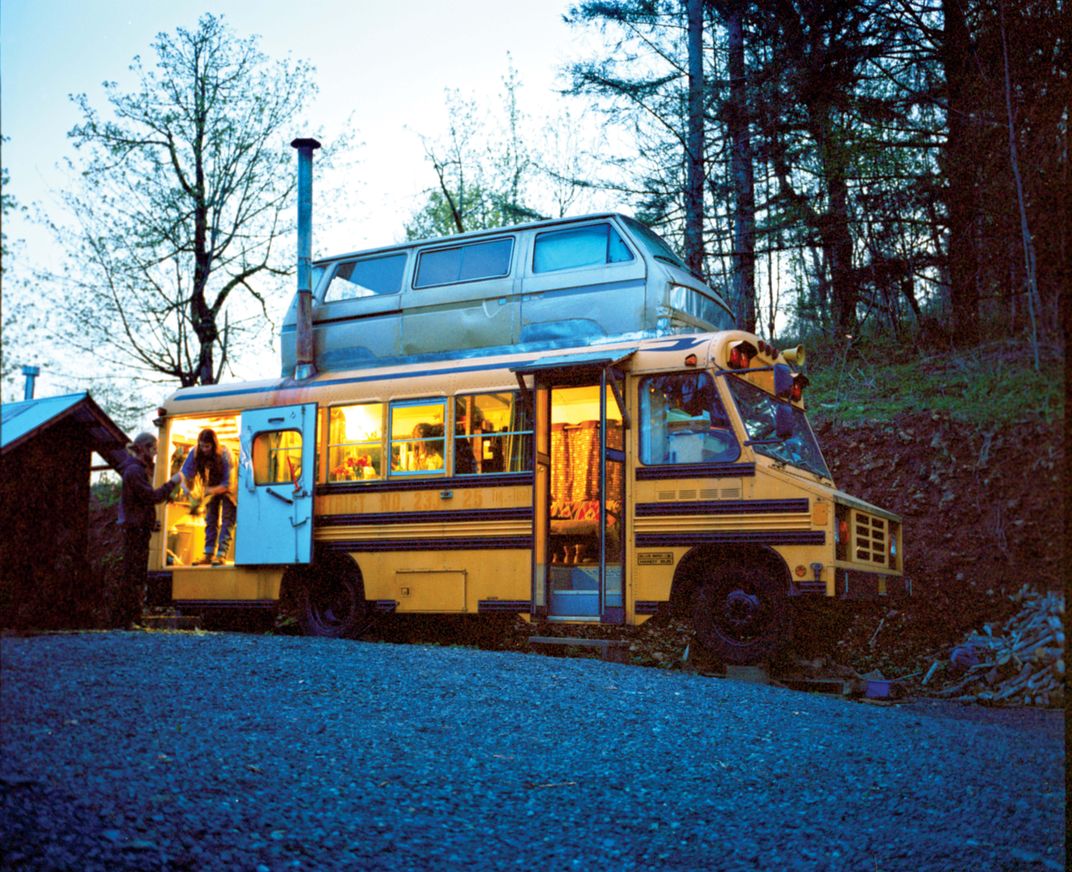
When you don’t have a lot of space, the little that you do have takes on tremendous value. Living small will force you to get creative, be organized and develop efficient systems for daily functions. The one golden rule to keep in mind is that the more space you have, the more stuff you will acquire that you don’t need—so start small with the basics and grow slowly.
“Definitely build a lot of cabinets and be mindful of the essentials,” Huntington says. “A storage shed is inevitable. When you get a place, start with a storage shed or simple structure. Live in there for a while and then decide where you’re going to place your house or larger structure. That way you already have a place to store all your stuff.”
A Note to our Readers
Smithsonian magazine participates in affiliate link advertising programs. If you purchase an item through these links, we receive a commission.
/https://tf-cmsv2-smithsonianmag-media.s3.amazonaws.com/filer/23/21/2321c6da-1ff2-45b0-83f9-f548f12327f9/mobile-credit_samuel_glazebrook.jpg)
/https://tf-cmsv2-smithsonianmag-media.s3.amazonaws.com/filer/52/bb/52bb5275-5216-4957-bf7b-f973cf0e2a1c/header-credit_samuel_glazebrook.jpg)
